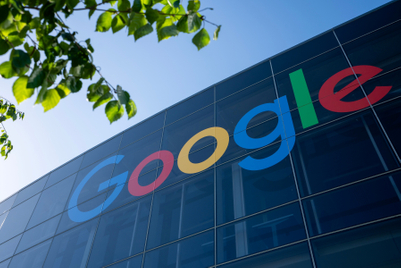
The question that arises is whether 2024 is the right time to introduce stricter controls on the advertising of heavily polluting products. If not now, then when? However, a major issue that needs to be addressed is the definition of ‘high carbon’. Would a sharp distinction between high carbon (bad) and low carbon (good) be too crude? Another concern is the enforcement and logistics of such a ban.
Campaign Asia-Pacific reached out to experts in the advertising industry to weigh in on whether they would support the move to restrict high-carbon advertising or ban it altogether. Due to conflict of interest, many agencies declined to comment. However, we have gathered substantial insights from the ones who did respond.
Global chief creative officer, Cheil Worldwide

Yes, restricting advertising by brands that couldn’t care less about climate change will help, but just a bit. Decades of mainstream campaigns and lobbying by Greenpeace, Friends of the Earth, Extinction Rebellion and hundreds more NGOs have failed to meaningfully change the course of global production—or consumption. Despite research and media comment suggesting Gen Z and Alpha are ‘climate conscious’, they’ve proven to have a healthy appetite for carbon-heavy social networks, fashion and travel—all of which continue to thrive.
And though people get labelled climate change supporters or deniers, this is less so for brands. City traders and investors indiscriminately fill portfolios with fossil-extracting energy and mining companies, precious metal and mineral-intense hi-tech corps that generate profits for shareholders and pension funds. Few questions are asked.
Restricting ads from brands deemed carbon-intensive raises the question: How to determine what brands or parent companies are carbon-intensive? Getting agreement on a workable framework—and committing to it—would be insanely complicated.
Restricting carbon-intensive brands sounds appealing. But without legislation, it would be a half measure. That said, any curb on our seemingly endless consumption would help to some degree—and that’d be a degree more than we’ve so far achieved

Using tobacco as a model for carbon-intensive industries is tempting, but I think we can be more innovative and more creative than that. Here’s why: just because we restrict Shell or EDF from advertising, I cannot imagine anyone putting a litre less fuel in their cars or turning the lights on less in their home.
Instead, we can take another lesson from the campaign against Big Tobacco: force businesses in carbon-intensive sectors to carry a compulsory warning about how their products or services affect the climate.
Imagine the power that raising consumer consciousness in this way could have, and the combined spending power of billions of consumers might finally be the thing that persuades recalcitrant CEOs to start delivering on their climate promises.
There’s a simple answer to opponents of the move to ban high carbon ads: read the tea leaves.Take Australia for example. Australians want action on climate change. Banning advertising of high-carbon products is a simple and tangible step for many. Three quarters of Australians are concerned about climate change; 82% support the phasing-out of coal fired power stations (The Australia Institute, 2021). Moreover, a 2022 ad industry survey found 41% of consumers agree with introducing a ban on advertisements promoting fossil fuels on television.Controls on the advertising of harmful products have been around for 50 years. Australia moved to restrict cigarette advertising back in 1973. So, there is both legislative precedence and consumer appetite for change.With governments around the world and Australia already moving to restrict high-carbon advertising or ban it altogether, the message to opponents of regulation is clear. Adapt and evolve your business model or risk becoming a fossil yourselves.

The debate over implementing restrictions or bans on advertising carbon-intensive products and services is complex. Aviation, livestock agriculture and electronic devices all significantly contribute elevated carbon footprints. Whilst banning the advertising of these products may contribute to climate change mitigation and encourage more sustainable practices, the economic impact of doing so would likely paralyse progress on the carbon transition practices so desperately needed.Added to that, advertising operates a long way downstream from where some of the most significant climate challenges surface. Certainly, we have a role to play in ensuring consumers are informed and environmental claims made by brands can be substantiated but the climate emergency needs far more than a neatly tied bow. Fundamental system level change and a co-ordinated response across government, civil society, corporations, academics and consumers is the only way forward.To that end, education, accurate reporting on carbon footprints and transparent transition plans combined with government intervention are likely to be more effective than outright bans. Right now, we need to use both the carrot and the stick.

Advertising plays a crucial role in influencing consumer behaviour; it is why our industry exists; we are very good at getting people to buy things they may or may not need. So, in the context of a global economy transitioning to low carbon emissions, I support restricting the advertisements of carbon-intensive goods and services. For example, how we get around, in the form of transport, represents 14% of global greenhouse gas emissions.
We must find fuel efficiencies or electrify our cars to achieve the net zero targets countries and corporations have committed. A petrol-powered Land Rover Discovery emits more than 50% more carbon than a VW Polo and 115% more carbon than a Tesla. Hence, if we want people to buy more fuel-efficient or electric cars, shouldn’t we consider restricting the advertisements of the highest carbon-emitting models? This will force car manufacturers to reconsider the types of cars they produce and drive the market to be more fuel-efficient or electrified.
|
This post is filed under... Sounding Board: APAC experts speak on marketing and comms issues |
(Nikita Mishra and Shawn Lim contributed to this story)


.jpg&h=334&w=500&q=100&v=20250320&c=1)
.jpg&h=334&w=500&q=100&v=20250320&c=1)

.png&h=334&w=500&q=100&v=20250320&c=1)

.png&h=334&w=500&q=100&v=20250320&c=1)

.jpg&h=334&w=500&q=100&v=20250320&c=1)



.png&h=268&w=401&q=100&v=20250320&c=1)
.jpg&h=268&w=401&q=100&v=20250320&c=1)




.png&h=268&w=401&q=100&v=20250320&c=1)